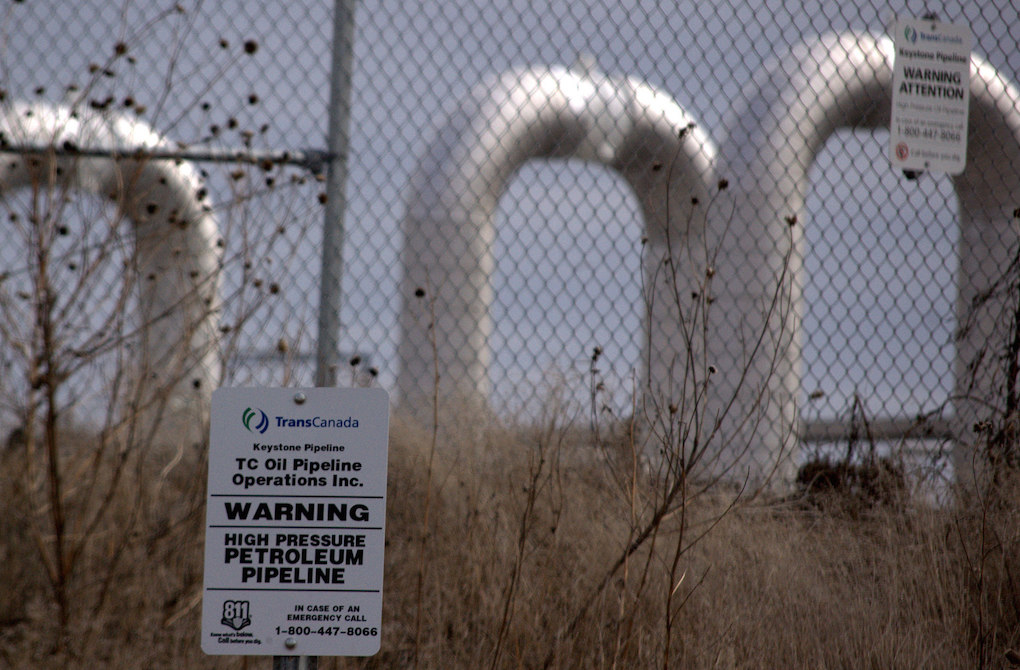A newly installed TransCanada natural gas pipeline exploded early Thursday morning on June 7, 2018, in the remote Nixon Ridge area of Marshall County in West Virginia, according to a report from EcoWatch.
TransCanada — the same company behind the Keystone pipeline — said the explosion has been contained and an investigation is underway. No injuries were reported, said EcoWatch, but the blast did shake residents and could be seen and felt as far as a reported 20 miles away. There was a very large fireball that burst through the sky.
“As soon as the issue was identified, emergency response procedures were enacted and the segment of impacted pipeline was isolated. The fire was fully extinguished by approximately 8:30 am,” the company commented Thursday.
“The cause of this issue is not yet known,” TransCanada stated. “The site of the incident has been secured and we are beginning the process of working with applicable regulators to investigate, including the Pipeline and Hazardous Materials Safety Administration.”
Luckily, the pipeline exploded in a sparsely populated area. I can’t help but wonder what could happen if a similar explosion happened along Enbridge’s Pipeline 9, which runs through the north end of Toronto. What would be the potential impact to life and limb, and infrastructure and buildings in the surrounding areas?
Enbridge has completed the process of reversing the direction of its Line 9 pipeline between Sarnia and Montreal in order to transport their tar sands diluted bitumen from Alberta to East Coast ports for shipment around the world. This reversal and the strain of carrying heavy diluted bitumen in reverse has caused anti-pipeline activists to question whether the aging pipeline could be considered safe.
A Pipeline and Hazardous Materials Safety Administration paper noted that it “is issuing this advisory bulletin to alert operators of hazardous liquid and gas transmission pipelines of the potentially significant impact flow reversals, product changes and conversion to service may have on the integrity of a pipeline. Failures on natural gas transmission and hazardous liquid pipelines have occurred after these operational changes.”
The same report notes two recent cases of pipeline failures:
“Two recent pipeline failures occurred on hazardous liquid pipelines where the flow had been reversed. The Tesoro High Plains Pipeline rupture was discovered on September 29, 2013, after leaking an estimated 20,000 barrels of crude oil in a North Dakota field. The location of pressure and flow monitoring equipment had not been changed to account for the reversed flow. The Pegasus Pipeline failed on March 29, 2013, releasing about 5,000 barrels of crude oil into a neighborhood in Faulkner County, Arkansas. The pipeline flow had been reversed in 2006.”
A 2015 analysis of U.S. federal records reveals that in just the past year and four months, there have been 372 oil and gas pipeline leaks, spills and other incidents, leading to 20 deaths, 117 injuries and more than $256 million in damages. The data adds to a June 1, 2013 independent analysis of federal records revealing that since 1986, oil and gas pipeline incidents have resulted in 532 deaths, more than 2,400 injuries and more than $7.5 billion in damages.
Russ Girling, TransCanada president and CEO said at the line opening, “This is truly a best-in-class pipeline and we look forward to many years of safe, reliable, and efficient operation on behalf of our customers.” This part of the TransCanada pipeline was newly installed, never mind the safety of aging pipeline infrastructure. The explosion left a crater, with an estimated 10 acres affected.
Robert Burrough, the director with the Pipeline and Hazardous Materials Safety Administration’s Eastern Regional Office, told the Pittsburgh Post-Gazette the affected line is likely TransCanada’s $1.6-billion, 160-mile Leach XPress pipeline, which started service in January.
Photo: shannonpatrick17/Flickr




